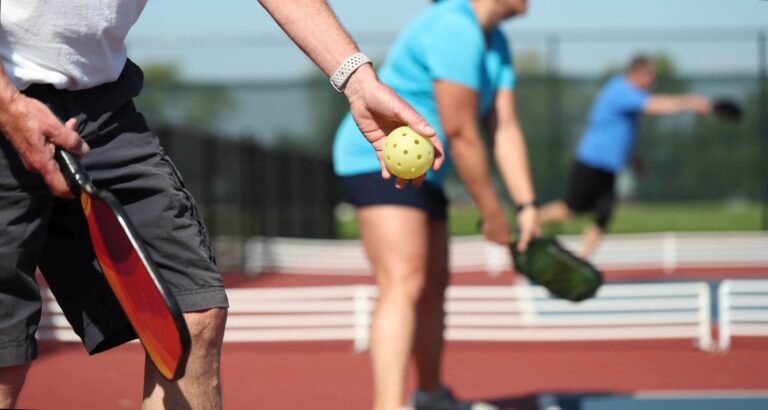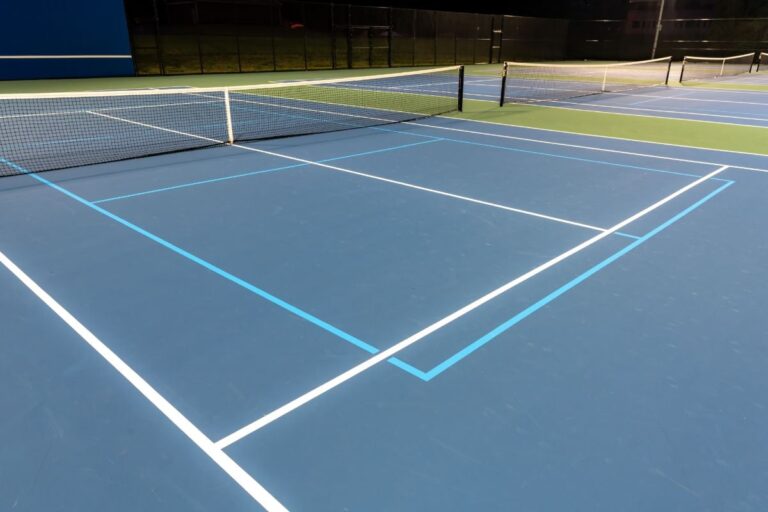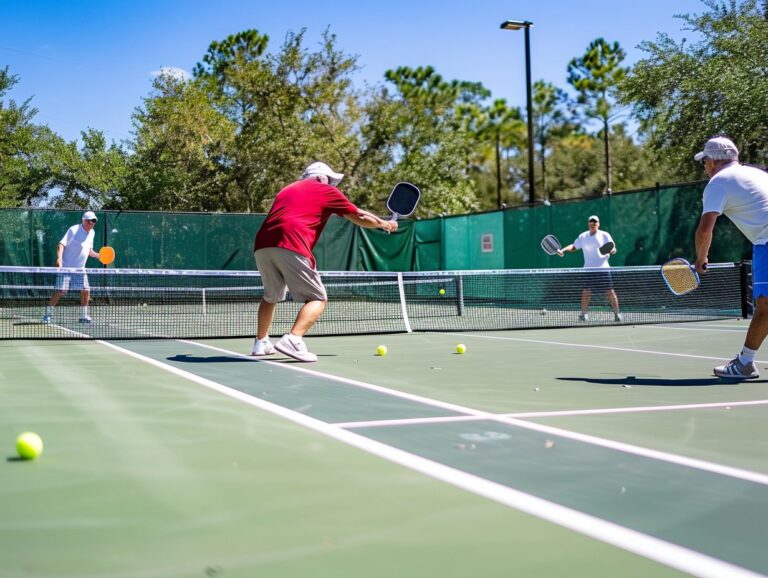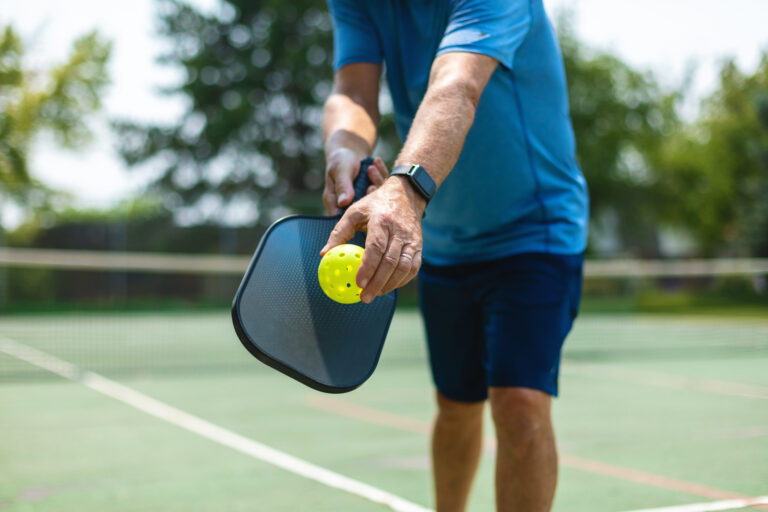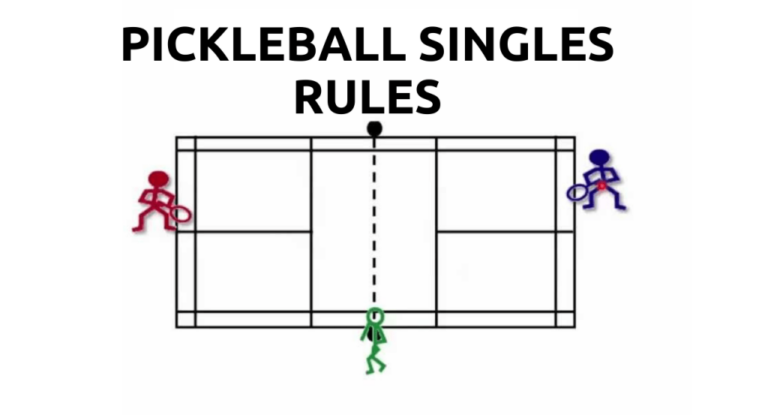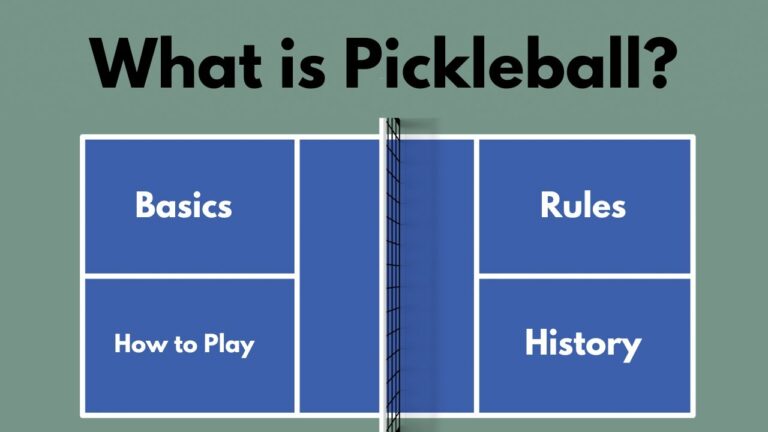Conquering the Kitchen: A Guide to Pickleball’s Non-Volley Zone
What is the Non Volley Zone in Pickleball? The Ultimate Guide
The non-volley zone (NVZ), also known as the kitchen, is the area of the pickleball court that extends 7 feet from the net on both sides. Players are not allowed to hit the ball while standing in the NVZ unless the ball has bounced first. The purpose of the NVZ is to prevent players from executing powerful smashes from close to the net, promoting longer rallies and strategic play. Understanding the rules and strategies related to the NVZ is crucial for success in pickleball.
Key Takeaways
- The non-volley zone (NVZ) or kitchen is a critical area of the pickleball court extending 7 feet from the net on both sides.
- Players cannot volley the ball while standing in the NVZ, but they can enter the zone after hitting a volley or to play a ball that has bounced.
- Developing a soft game, practicing controlled volleys, and using strategic lobbing are key strategies for playing effectively around the NVZ.
- Good communication with your partner and honesty in calling your own faults are essential for success in the NVZ.
- Incorporating specific drills into your practice sessions can help you improve your skills and confidence when playing around the kitchen.
By understanding the rules, developing effective strategies, and practicing regularly, you can master the non-volley zone and take your pickleball game to the next level. Remember to have fun, stay positive, and enjoy the social aspect of this exciting sport!
What is the Non-Volley Zone (NVZ) or Kitchen?
The non-volley zone, or kitchen, is an area that extends 7 feet from the net on both sides of the pickleball court. This zone is clearly marked with a line, and its dimensions are consistent across all pickleball courts. The NVZ is a defining feature of the game, and understanding its purpose and rules is essential for players of all skill levels.

Why is the Non-Volley Zone There?
The NVZ serves a crucial purpose in pickleball: it prevents players from executing powerful smashes from close to the net. By restricting volleys within this area, the game promotes longer rallies and emphasizes strategic play over raw power. This unique rule distinguishes pickleball from other paddle sports and contributes to its appeal among players of various ages and abilities.
The NVZ encourages players to develop a well-rounded game, focusing on placement, finesse, and patience rather than relying solely on aggressive net play. It levels the playing field, allowing players with different strengths to compete effectively against one another.
Rules of the Non-Volley Zone (Kitchen)
To master the NVZ, you must first understand the rules that govern play within this area. The primary rule is simple: players cannot volley the ball while standing in the NVZ. A volley is when you hit the ball out of the air before it bounces. If you’re in the kitchen and the ball hasn’t bounced, you must let it bounce before hitting it.
However, there are some nuances to this rule:
- Entering the NVZ after a volley: Players can enter the NVZ after hitting a volley, but they must exit the zone before playing the next shot. This means you can follow through into the kitchen after a volley, but you must quickly get out before hitting the ball again.
- Staying in the NVZ: If the ball bounces in the NVZ, you can stay in the kitchen to play your shot. You don’t have to exit the zone if you’re hitting a ball that has already bounced.
- Foot faults: Touching the NVZ line, even with just a part of your foot or your momentum carrying you into the kitchen during a volley, results in a fault. Be mindful of your positioning and footwork when playing near the NVZ.
Violating any of these rules results in a fault and the loss of the rally. It’s essential to call your own faults honestly and communicate with your partner to avoid confusion and maintain fair play.
Common Non-Volley Zone (Kitchen) Misconceptions
One common misconception about the NVZ is that players can’t enter it at all. This isn’t true! You can enter the kitchen whenever you want; you just can’t volley from within it. Feel free to move into the NVZ to retrieve a ball or position yourself for the next shot.
Another misconception is that only your feet must stay out of the NVZ during a volley. In fact, your entire body and clothing must be outside the NVZ when making a volley. Even if just your arm or a piece of your clothing touches the NVZ line during a volley, it’s considered a fault.
Strategies for Playing Around the Non-Volley Zone
Now that you understand the rules of the NVZ, let’s explore some strategies for playing effectively around this critical area of the court.
Patience and Positioning
One key strategy is to be patient and wait for the right opportunity to approach the net. Rushing to the kitchen too quickly can leave you vulnerable to lobs or well-placed shots from your opponents. Instead, focus on keeping the ball in play and positioning yourself just outside the NVZ, ready to seize an advantage when it presents itself.
When you’re in this position, you can use the NVZ to your advantage. You can hit groundstrokes and volleys from just outside the kitchen, using the NVZ line as a reference point for your shots. This allows you to apply pressure on your opponents while maintaining a safe distance from the non-volley zone.
Developing a Soft Game
Another essential strategy for mastering play around the NVZ is to develop a soft game. This means learning to execute drop shots, dinks, and other touch shots that land softly in your opponents’ kitchen. By forcing your opponents to hit up on the ball, you can create opportunities to move forward and take control of the point.
Practicing these soft shots is crucial to your success around the NVZ. Spend time working on your drop shots, focusing on control and placement rather than power. Incorporate dinks into your practice sessions, aiming to keep the ball low over the net and landing softly in the kitchen. The more comfortable you become with these shots, the more effectively you can use them in game situations.
Lobbing and Resetting
When your opponents are in a strong position at the net, a well-placed lob can be an effective way to push them back and give yourself time to reset. By lifting the ball high over your opponents’ heads, you can force them to retreat from the NVZ and create an opportunity to move forward yourself.
However, it’s essential to use lobs strategically and not rely on them too heavily. A well-executed lob should be high enough to force your opponents back but not so high that it gives them time to recover and hit an overhead smash.
Practicing Controlled Volleys
While you can’t volley from within the NVZ, volleying from just outside the kitchen is a crucial skill to develop. When practicing volleys near the NVZ, focus on control and placement rather than power. Your goal should be to hit soft, controlled volleys that keep the ball low over the net and force your opponents to hit up on their next shot.
Practicing controlled volleys will help you avoid hitting the ball into the net or out of bounds, common mistakes when volleying near the NVZ. It will also help you develop the touch and finesse needed to execute effective drop volleys and other touch shots.
Tips for Mastering the Non-Volley Zone (Kitchen)
In addition to the strategies outlined above, here are some tips to help you master play around the NVZ:
Communication is Key
Good communication with your partner is essential when playing near the NVZ. Make sure you’re both on the same page about who is responsible for covering the kitchen and who will take shots in the middle of the court. Calling “mine” or “yours” can help avoid confusion and ensure that you’re working together effectively as a team.
It’s also important to be honest and call your own faults if you violate the NVZ rules. Don’t rely on your opponents to make the call for you. Demonstrating good sportsmanship and integrity will make the game more enjoyable for everyone.
Common Mistakes to Avoid
To master the NVZ, it’s important to be aware of common mistakes and work to avoid them. Some of the most common mistakes include:
- Volleying while standing in the NVZ: Remember, you can’t volley from within the kitchen. If you find yourself in the NVZ and the ball hasn’t bounced, let it bounce before hitting it.
- Rushing to the net too quickly: Be patient and wait for the right opportunity to approach the net. Rushing forward too quickly can leave you vulnerable to lobs or well-placed shots from your opponents.
- Hitting too hard or high when volleying near the NVZ: When volleying near the kitchen, focus on control and placement rather than power. Hitting the ball too hard or too high can result in the ball going out of bounds or giving your opponents an easy opportunity to pass you.
- Failing to communicate with your partner: Good communication is essential when playing near the NVZ. Make sure you and your partner are on the same page about who is responsible for covering the kitchen and who will take shots in the middle of the court.
By being aware of these common mistakes and working to avoid them, you can improve your play around the NVZ and become a more effective pickleball player.
Drills to Improve Your NVZ Play
Incorporating specific drills into your practice sessions can help you improve your play around the NVZ. Here are a few drills to try:
- NVZ line drills: Practice hitting shots from just outside the NVZ line, focusing on control and accuracy. Try to land your shots deep in your opponents’ court or softly in their kitchen.
- Volley-to-volley drills: Work with a partner to practice controlled volleys from just outside the NVZ. Focus on keeping the ball low over the net and placing your volleys accurately.
- Third shot drop drills: The third shot drop is a crucial shot in pickleball, often used to transition from the back of the court to the NVZ. Practice hitting soft, controlled drop shots that land in your opponents’ kitchen, forcing them to hit up on their next shot.
- Transition drills: Practice moving in and out of the NVZ, simulating game situations. Work on your footwork and positioning as you move from the back of the court to the kitchen and vice versa.
By incorporating these drills into your practice sessions, you can develop the skills and confidence needed to master play around the NVZ.
Bonus Section: Fun Facts about Pickleballs
While our focus has been on the NVZ, let’s take a moment to appreciate the ball that makes this game possible: the pickleball. Here are a few fun facts about pickleballs:
- Pickleballs are similar in size to wiffle balls but are made of harder plastic with perforated holes. The perforations help the ball fly straight and reduce wind resistance.
- The weight and size of pickleballs are regulated by the USA Pickleball Association (USAPA). According to the USAPA, pickleballs must weigh between 0.78 and 0.935 ounces (22-26.5 grams) and measure between 2.87 and 2.97 inches (7.29-7.54 cm) in diameter.
- Pickleballs come in a variety of colors, but the most common colors used in official tournament play are white, yellow, and orange.
- The material and texture of pickleballs can vary, with some balls featuring a smoother surface and others having a more textured surface. The type of ball used can impact the speed and spin of the ball, as well as the feel of the ball on the paddle.
Understanding the characteristics of pickleballs can help you choose the right ball for your playing style and preferences.
Conclusion
Mastering the non-volley zone is essential to becoming a successful pickleball player. By understanding the rules, developing effective strategies, and practicing key skills, you can take your game to the next level and enjoy all that this exciting sport has to offer.
Remember to be patient, communicate with your partner, and focus on control and placement when playing around the NVZ. Incorporate specific drills into your practice sessions to develop your soft game and improve your ability to transition from the back of the court to the kitchen.
Most importantly, have fun and enjoy the process of learning and improving. Pickleball is a social sport that brings people together, so don’t be afraid to make new friends and learn from other players’ experiences.
We hope this comprehensive guide has provided you with the knowledge and tools needed to conquer the kitchen and take your pickleball game to new heights. Keep practicing, stay positive, and always remember to celebrate your successes on the court.
Now it’s your turn! Share your own pickleball experiences, favorite NVZ strategies, or any questions you may have in the comments section below. We’d love to hear from you and continue the conversation about this fantastic sport.
Happy pickling!

